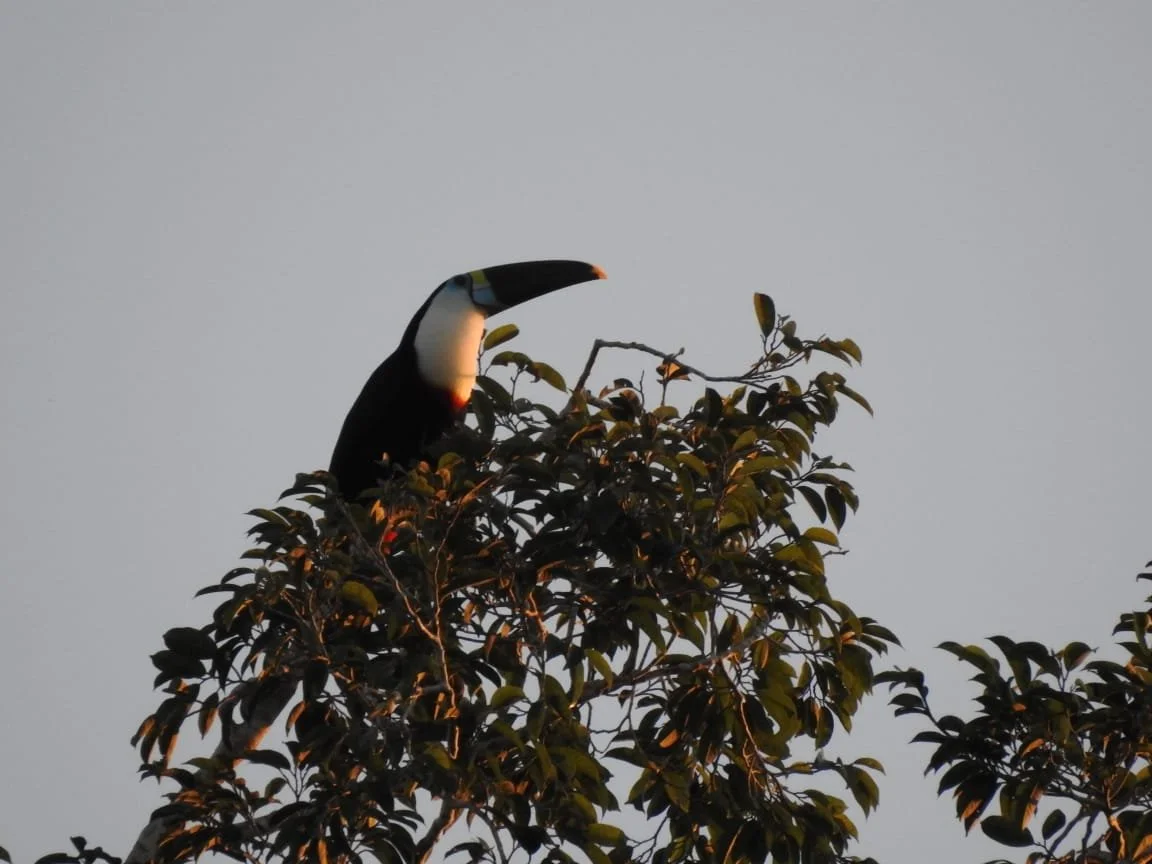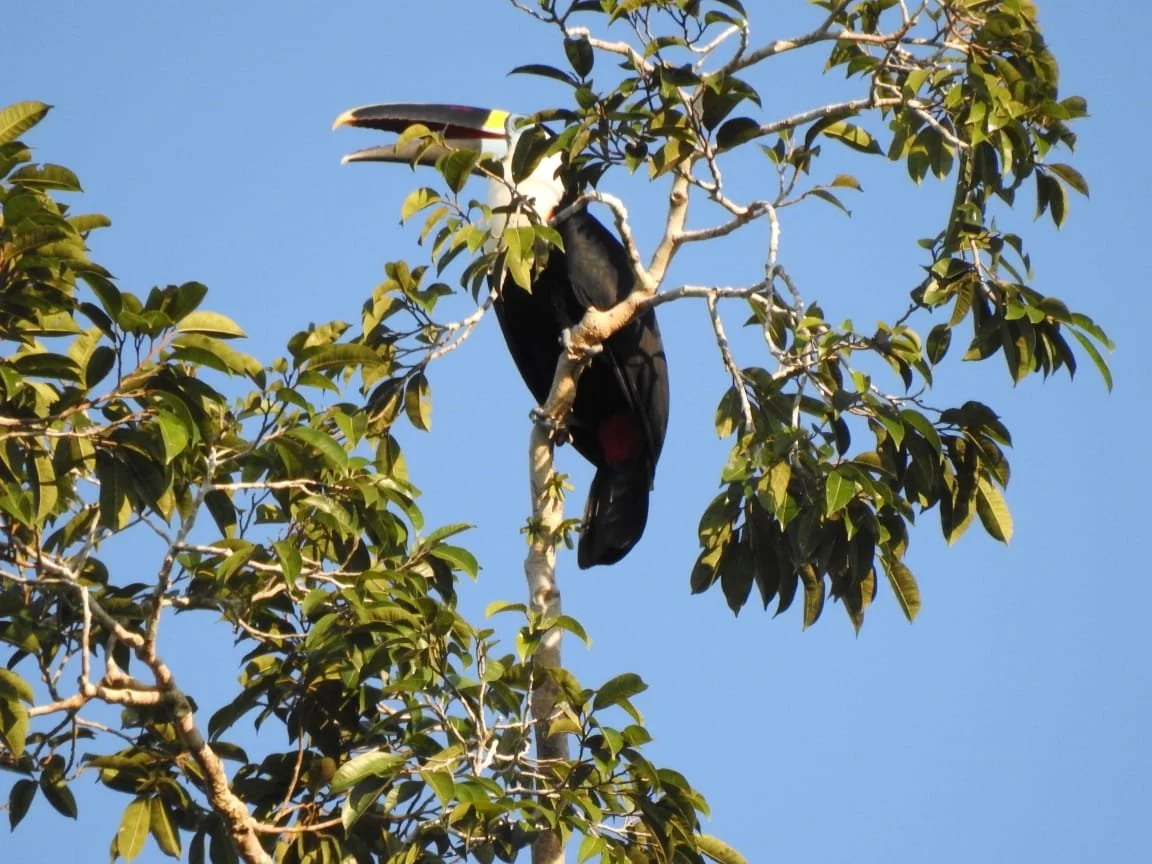Chestnut Eared Aracari
Chestnut-eared Aracari
Chestnut-eared aracari are apart of the toucan family. These are small birds range from 220 to 310 grams, which is about 7-11 ounces. They only grow typically 17 to 19 inches in length. Chestnut-eared aracari’s are renowned for their vibrant plumage.
Typically, chestnut-eared aracaris have black heads with a striking chestnut or maroon color ear patch. They have a bright yellow chest and belly, with a crimson red band. As well as, a red rump. The bill is dark brown, with a distinct yellow-orange stripe along the bottom of the upper mandible. The upper mandible is also hooked with prominent serrations.
The chestnut-eared aracari prefer wet, flooded and gallery forests as well as forest islands in rivers within the South American Amazon Basin, with extensions into the Andean foothills and parts of Columbia, Bolivia , Brazil, Argentina and Ecuador. They inhabit edges , clearings and can be found in plantations and cultivated lands. Although, dense bamboo and canebrake thickets provide a suitable and more favored habitat.
These habitats are filled with highly social, vocal and active birds whose-day to day life revolves around foraging, communicating , and nesting. Chestnut-eared aracaris prefer to travel in flocks of up to a dozen or more. They are most active during the cooler hours of the day. Most of this time goes to foraging.
Aracaris use their large , colorful bills to pluck fruit, sometimes hanging upside-down to reach a meal.While their diet is mostly nectar ,fruit , they also eat flowers, nuts, insects and even eggs and nestlings from the nests of other birds. They investigate and probe into tree crevices and cavities for hidden food sources. As they consume fruit and later regurgitate the seeds, they play a critical role in helping to maintain the health and diversity of their forest habitat.
Within their flocks, they communicate using a diverse repertoire of vocalizations , from high pitched calls, piercing calls to song-like notes. When moving across open areas of the forest, the group will typically fly in a single file line. During the breeding seasons, they communicate by raising their rump feathers and showing off their colorful bills.
Chestnut-eared aracaris prefer to nest and roost together in tree cavities. At night, aracaris will sleep huddled together inside the tree holes, often with their tails folded. Over their backs. The species is know to have cooperative breeding behavior, with more than just the mating pair helping to attend the nest.
Predators of the Chestnut-eared aracari include larger raptors, including large white hawks and ornate-hawk-eagles. Larger toucan species , such as the red-breasted toucan, have been observed preying on the eggs and nestlings of other toucans and aracaris. Medium-sized mammals , like opossums and monkeys destroy the nests and take eggs as well..


